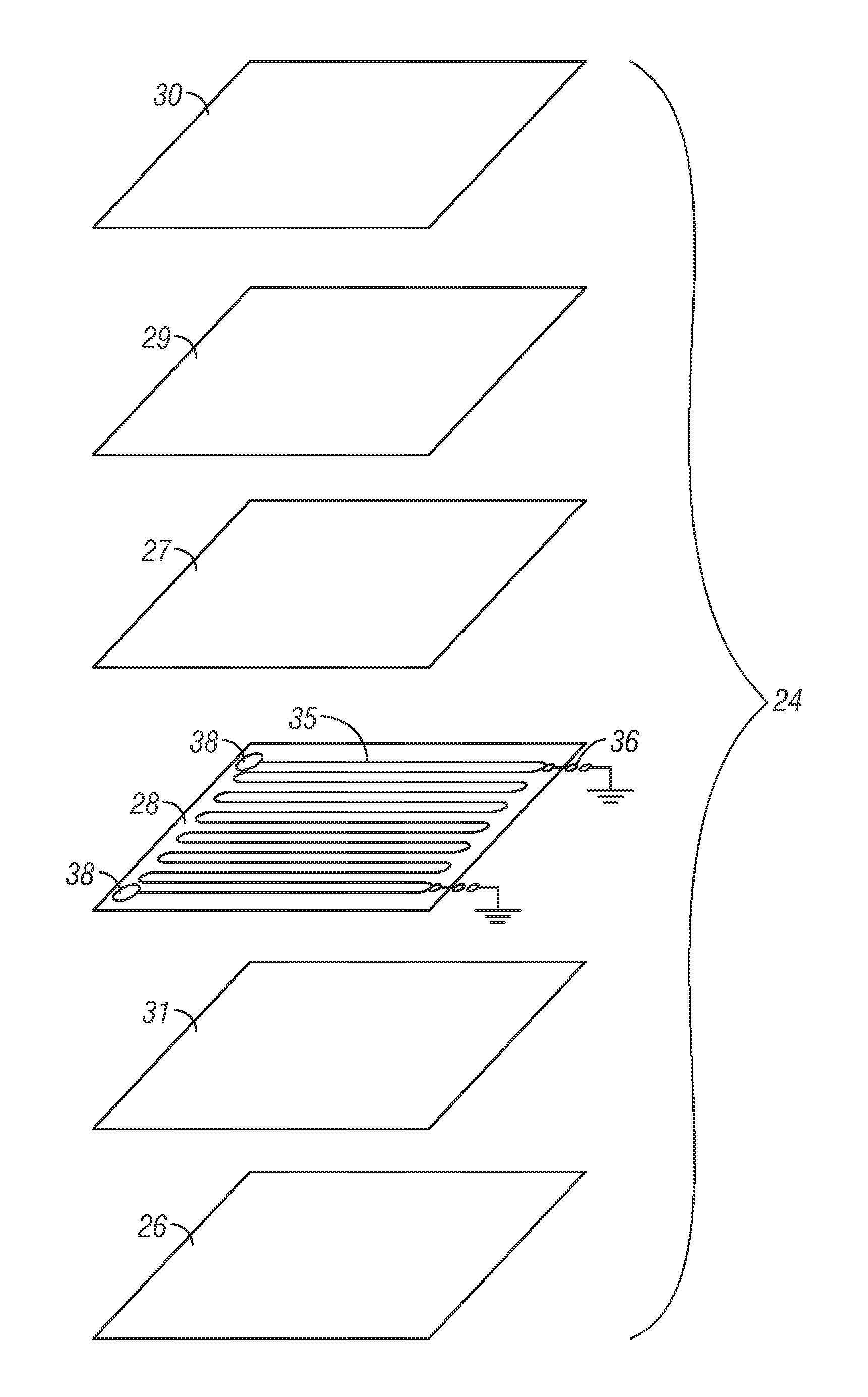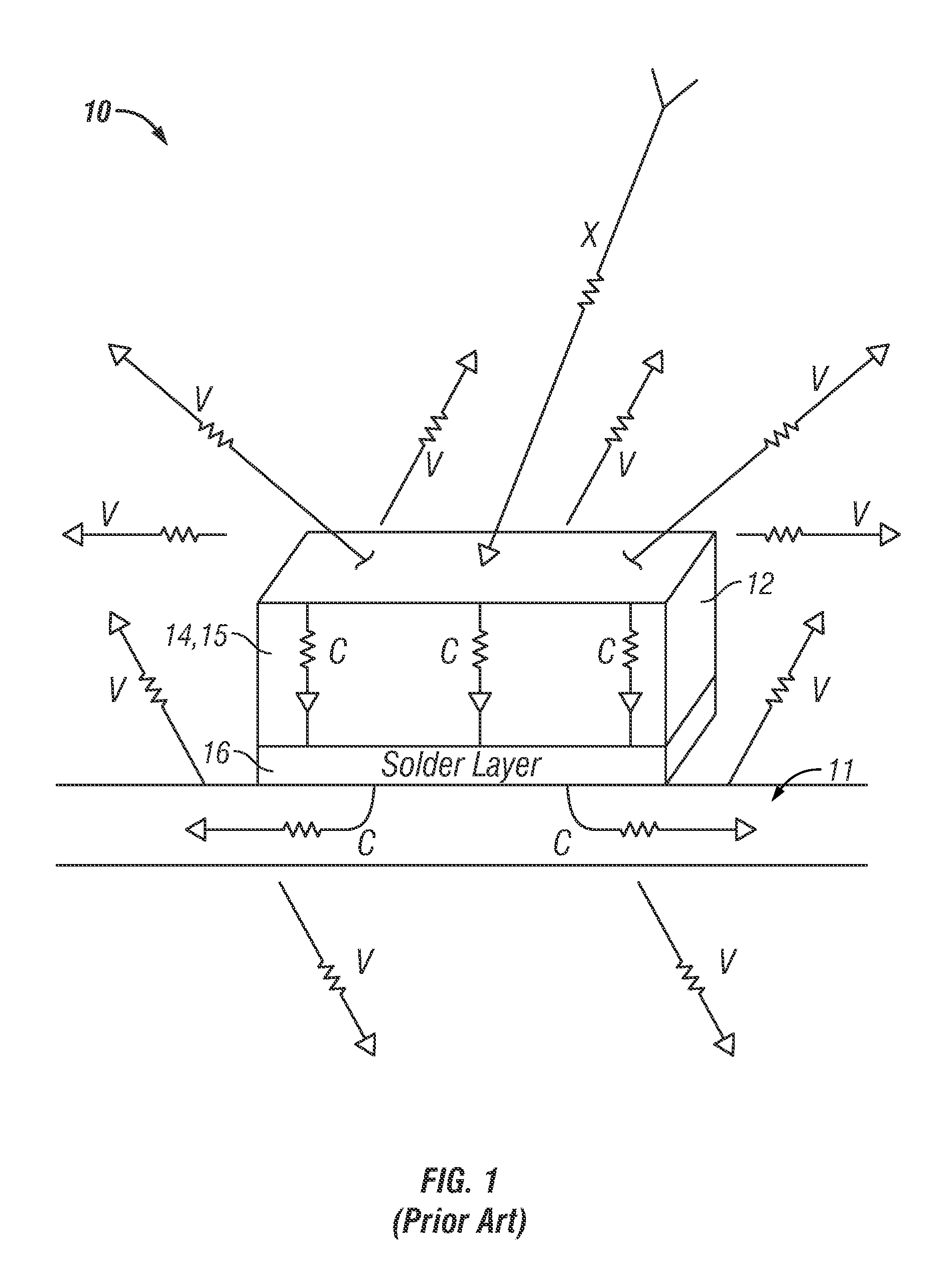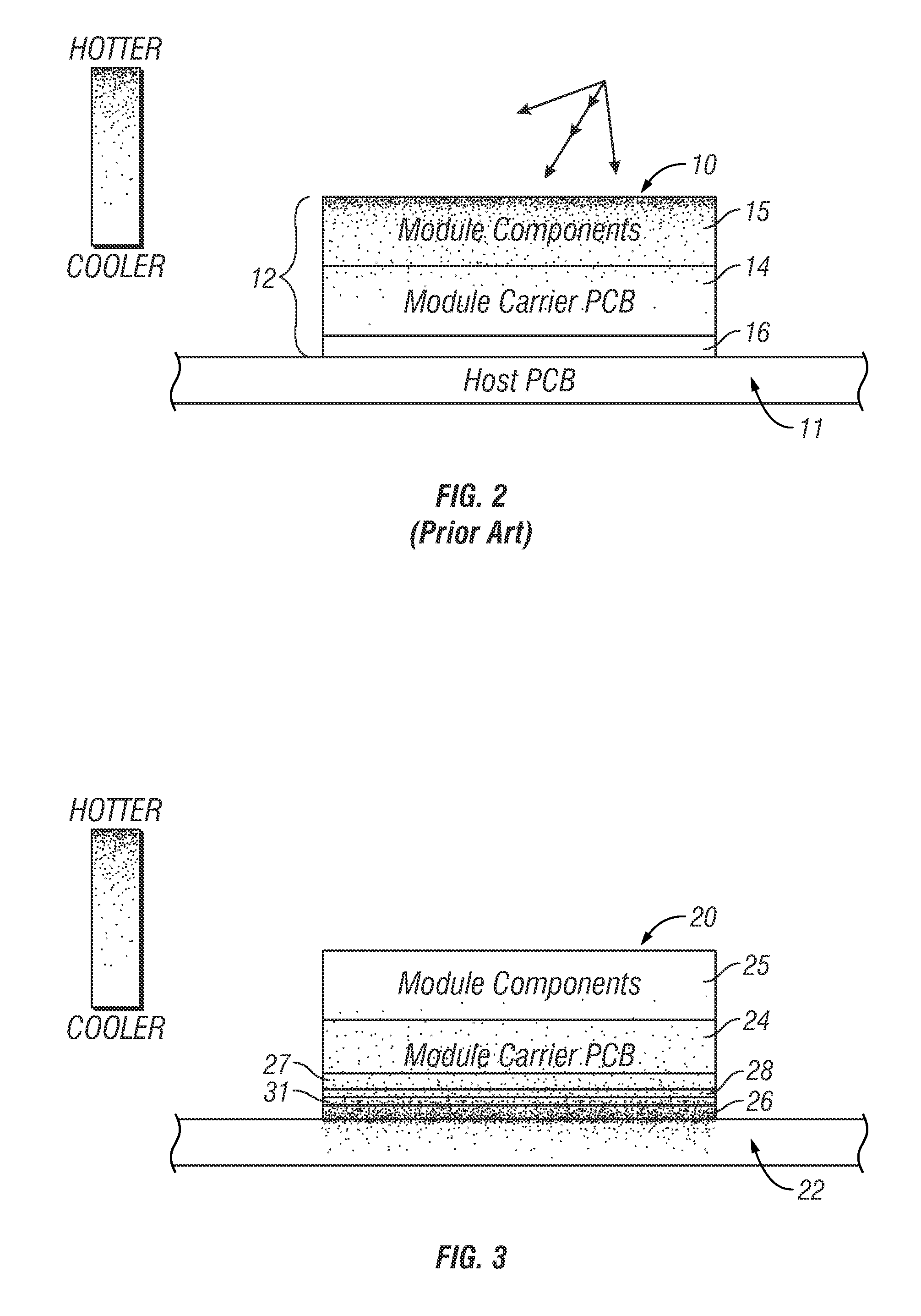Integral heater assembly and method for carrier or host board of electronic package assembly
a heater and electronic package technology, applied in the field of surface mount technology (smt), can solve the problems of increasing the cost of modules, increasing the cost of high-value devices, and increasing the cost of products
- Summary
- Abstract
- Description
- Claims
- Application Information
AI Technical Summary
Benefits of technology
Problems solved by technology
Method used
Image
Examples
Embodiment Construction
[0034]Certain embodiments as disclosed herein provide for a surface mount assembly in which a heater layer is embedded in one or more surface mount modules each having a carrier board holding internal components and a metallized mounting plane or solder interface layer. In another embodiment, a heater layer with plural heater zones is embedded in a host board on which multiple surface mount modules are mounted.
[0035]After reading this description it will become apparent to one skilled in the art how to implement the invention in various alternative embodiments and alternative applications. However, although various embodiments will be described herein, it is understood that these embodiments are presented by way of example only, and not limitation. As such, this detailed description of various alternative embodiments should not be construed to limit the scope or breadth of the present invention.
[0036]In the following description, the term “dielectric layer” means a layer of dielectr...
PUM
| Property | Measurement | Unit |
|---|---|---|
| thickness | aaaaa | aaaaa |
| length | aaaaa | aaaaa |
| power | aaaaa | aaaaa |
Abstract
Description
Claims
Application Information
 Login to View More
Login to View More - R&D
- Intellectual Property
- Life Sciences
- Materials
- Tech Scout
- Unparalleled Data Quality
- Higher Quality Content
- 60% Fewer Hallucinations
Browse by: Latest US Patents, China's latest patents, Technical Efficacy Thesaurus, Application Domain, Technology Topic, Popular Technical Reports.
© 2025 PatSnap. All rights reserved.Legal|Privacy policy|Modern Slavery Act Transparency Statement|Sitemap|About US| Contact US: help@patsnap.com



